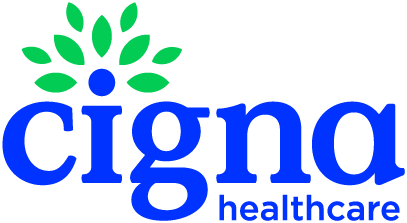While the cause of cancer continues to be extensively investigated, research has shown that women who are over the age of 40, obese or not physically active, with a family history of cancer are at higher risk of developing certain cancers, such as breast cancer.

Breast cancer forms in the cells of the breast and is the most common form of cancer in women.1,2
Detecting breast cancer in its early stages increases chances of survival and lowers chances of needing a mastectomy or chemotherapy treatment.2,3
Self-examination:
Being aware of how one’s breasts look and feel and carrying out regular self-examinations can help identify any changes.4 In front of a mirror, look for any swollen areas or dimples and squeeze the nipple to check for lumps or discharge.4 Then, when lying down or standing in the shower, place one arm over your head and check the breast and armpit, applying light, medium, and firm pressure using the flat surface of your fingers.4 If a lump is found or any changes are noticed in the appearance or feel of the breast, it’s recommended to make an appointment with a doctor as soon as possible.
Regular screenings:
As many women have no symptoms, regular screenings are particularly important. While screenings are usually offered to older women who are more at risk of developing breast cancer, if you have a family history of breast cancer it is recommended that you get screened from the age of 40 or even earlier (if necessary).3
Breast cancer screenings includes going for a mammogram, which uses x-rays to check for any abnormalities. In some instances, an ultrasound may also be done to double check any abnormalities found on a mammogram.5 Doctors may recommend to some younger women that an ultrasound is done before a mammogram.5

Cervical cancer starts in the cells lining the cervix, and is the fourth most common cancer in women.6
Women over the age of 30-35 are at higher risk of being diagnosed with cervical cancer, and because many women have no symptoms beforehand, regular screenings are vital for early detection. Currently, it is recommended that screenings for cervical cancer start around 21-years-old.6,7
The screening is a quick and simple procedure where a small sample of cells is removed from the cervix, which is then analyzed.6 This is known as a pap smear. Depending on the women’s age, a pap smear may be combined with HPV (human papilloma virus) test. HPV is a virus linked to the development of cervical cancer.6

If the screening finds abnormalities this does not immediately mean there is cancer, but a doctor will examine the cervix using a colposcope and may take a further sample of cells to test in the laboratory.7 If cancer is detected, MRI scans, PET scans, x-rays, ultrasounds, and CT scans may be used to determine the extent and stage of the cancer.

Apart from the medical implications of a cancer diagnosis, we understand the emotional burden associated with such a severe illness. That’s why at Cigna, our Nurse Case Managers work closely with members who are diagnosed with cancer (and other critical illnesses) – to ensure their treatment journey is as smooth as possible.

Carol* from Panama underwent chemotherapy following her breast cancer diagnosis:
“I would like to thank you both for your support during my breast cancer treatment. You were both very cordial to me and in a professional and patient way you were aware of each phase of the treatment. You took the time to call me and explain in detail the procedures to follow. It was my first time with a disease of this caliber and my first time with this health insurance. Only thanks to your efforts and constant guidance, was I able to complete my treatment successfully and without major delays.”
If you have any questions or need additional information, please contact your dedicated customer service team. Alternatively, visit www.cignawellbeing.com.
This article was reviewed by Dr. Paul Karagounis, Medical Advisor, with input from Beatriz Caballero Fernandez, Nurse Case Manager, TH&N – Integrated Health Team, Cigna.
*The name and image has been changed to protect the member's identity.
- Breast cancer: symptoms and causes. Mayo Clinic. https://www.mayoclinic.org/diseases-conditions/breast-cancer/symptoms-causes/syc-20352470. Accessed December 7, 2021.
- Breast cancer. World Health Organization. https://www.who.int/news-room/fact-sheets/detail/breast-cancer. Accessed December 7, 2021.
- Breast cancer screening. NHS. https://www.nhs.uk/conditions/breast-cancer-screening. Accessed December 7, 2021.
- Breast self-exam. National Breast Cancer Foundation, Inc. https://www.nationalbreastcancer.org/breast-self-exam. Accessed December 7, 2021.
- Ultrasound. Breastcancer.org. https://www.breastcancer.org/symptoms/testing/types/ultrasound. Accessed December 7, 2021.
- Cervical cancer overview. National Cervical Cancer Coalition. https://www.nccc-online.org/hpvcervical-cancer/cervical-cancer-overview. Accessed December 7, 2021.
- Diagnosis and treatment. Mayo Clinic. https://www.mayoclinic.org/diseases-conditions/cervical-cancer/diagnosis-treatment/drc-20352506. Accessed December 7, 2021.
All Cigna products and services are provided by or through operating subsidiaries of Cigna Corporation, including Cigna Global Wellbeing Solutions Limited, and other contracted companies. The Cigna name, logos, and other Cigna marks are owned by Cigna Intellectual Property, Inc. Products and services may not be available in all jurisdictions and are expressly excluded where prohibited by applicable law. This material is provided for informational purposes only. It is believed accurate as of the date of publication and is subject to change. Such material should not be relied upon as legal, medical, or tax advice. As always, we recommend that you consult with your independent legal, medical, and/or tax advisors. ©2021 Cigna. Some content may be provided under license.

